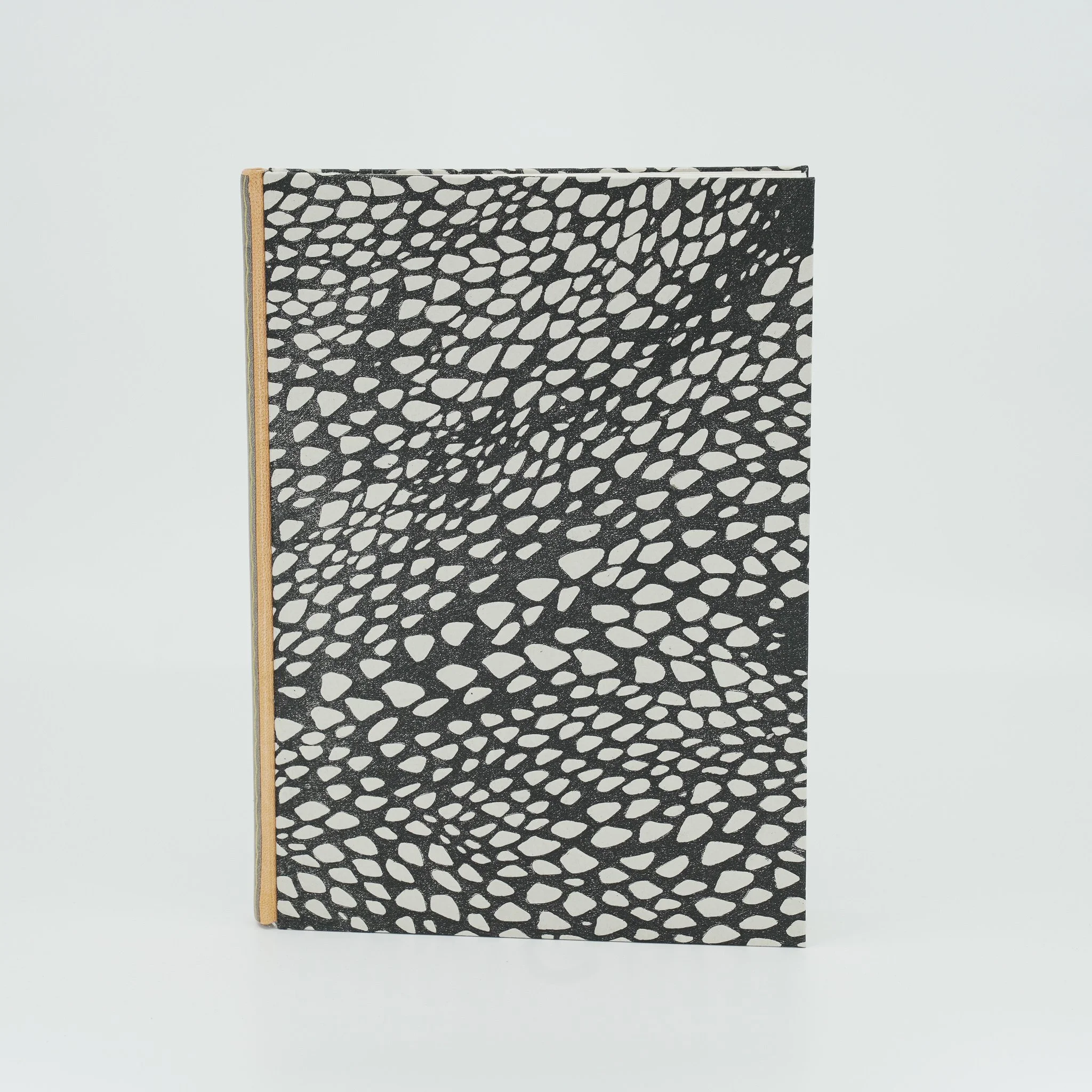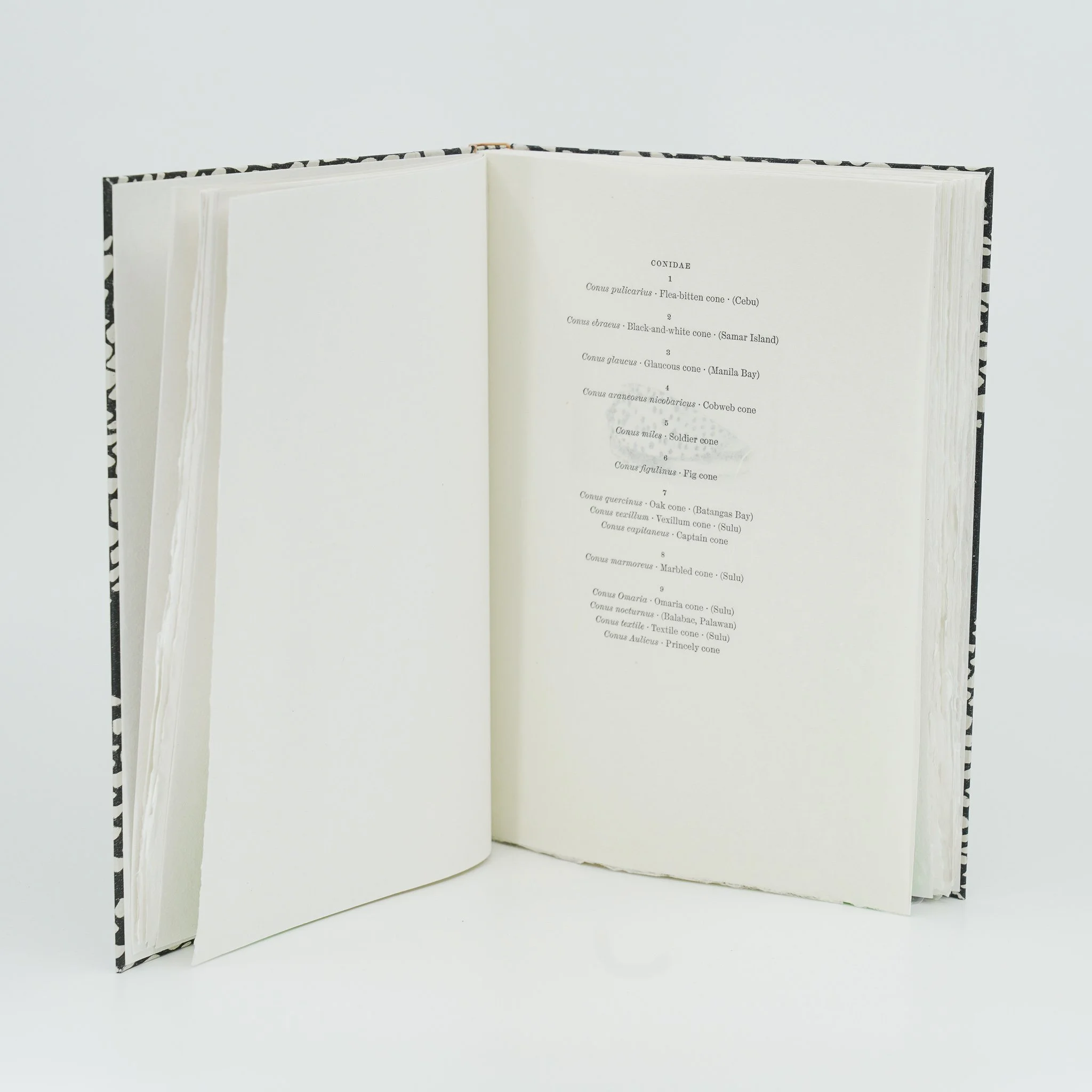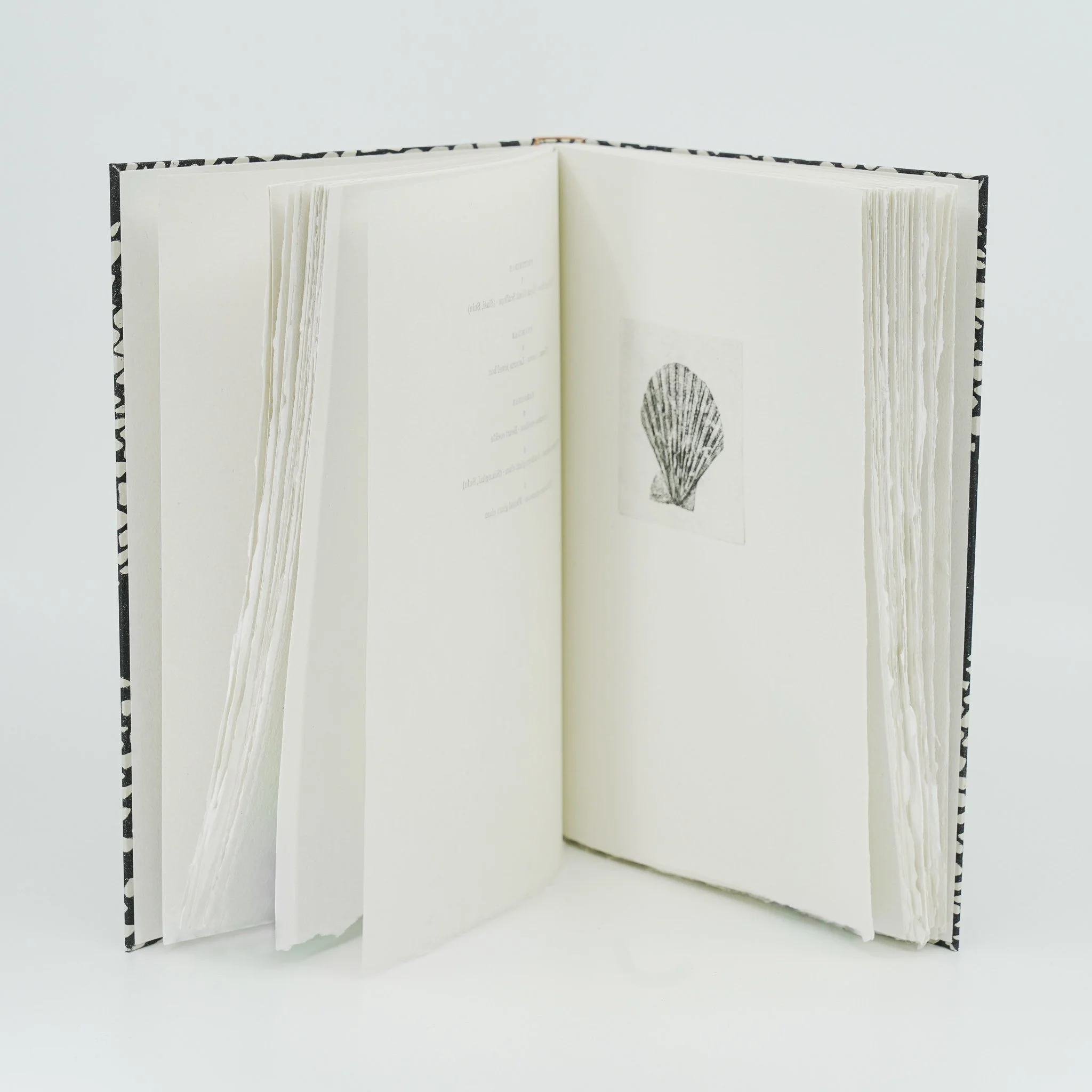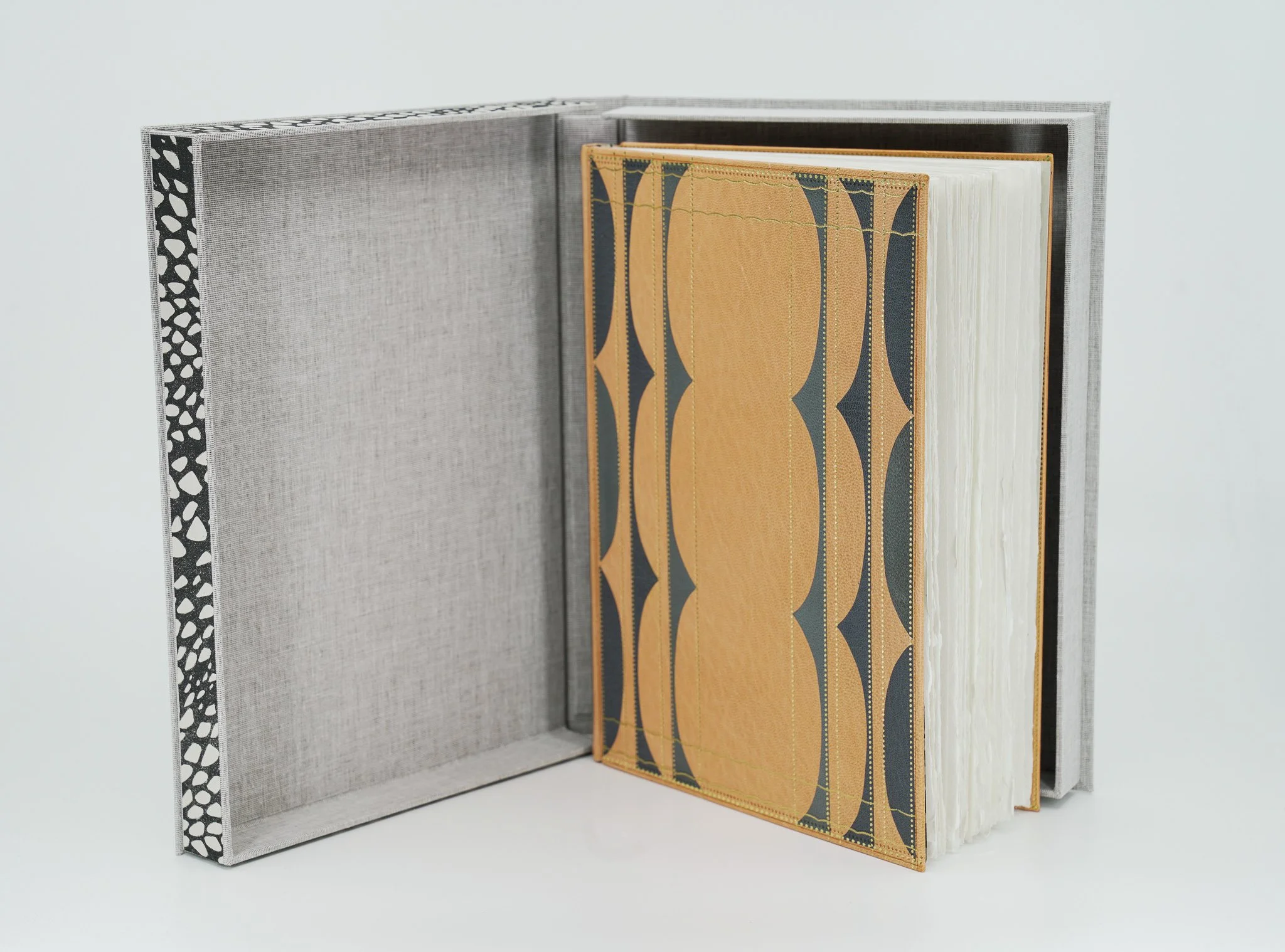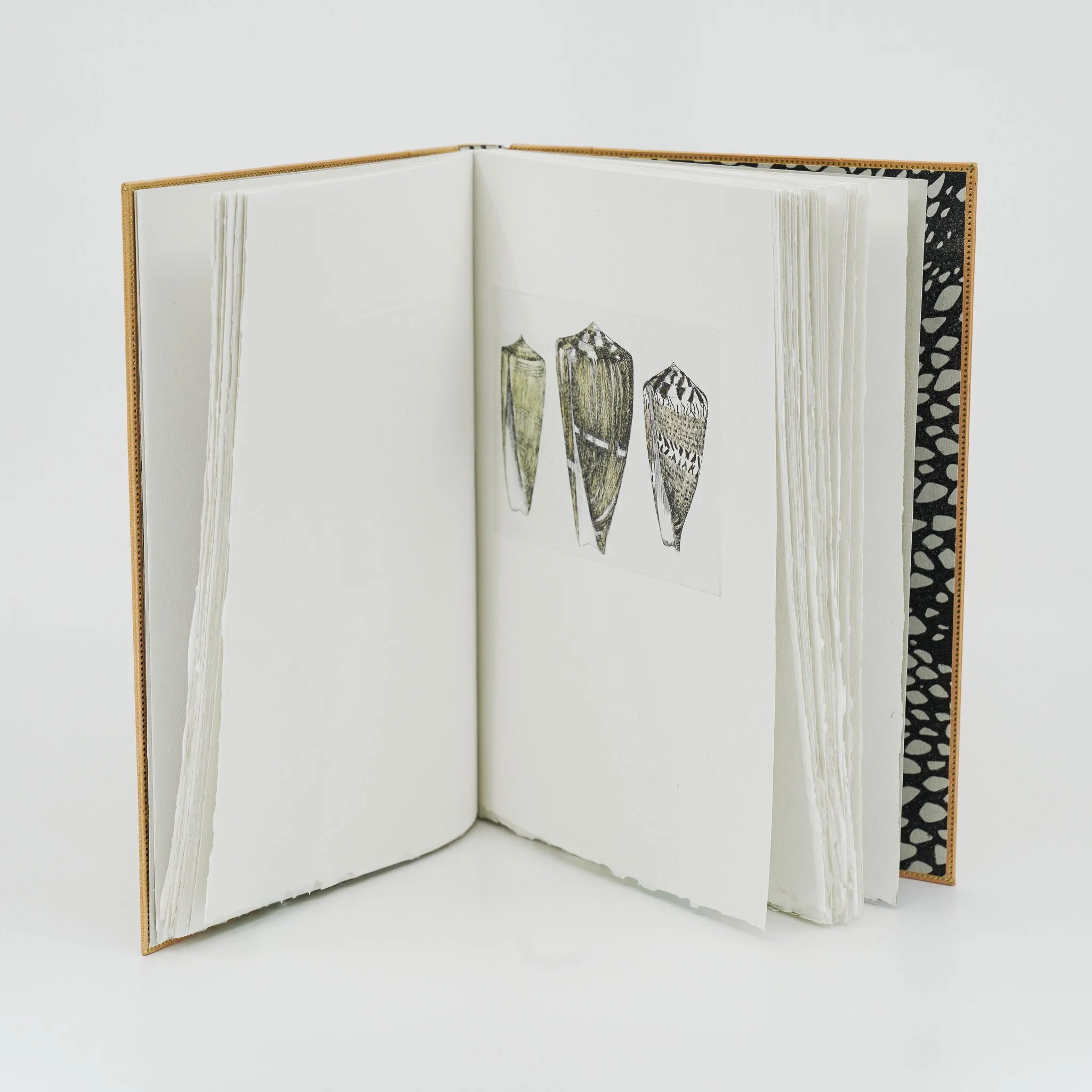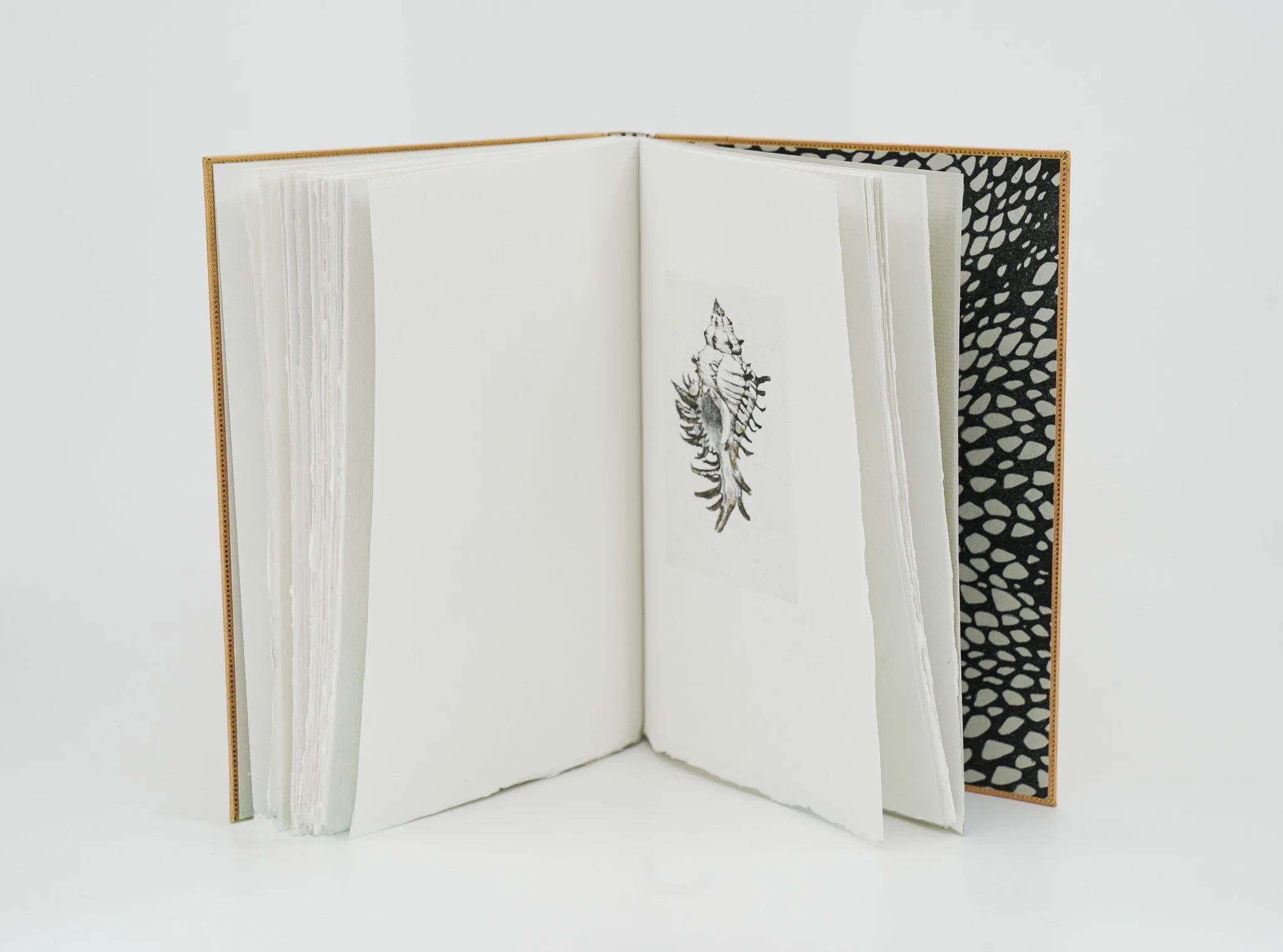Conchyliorum:
On Investigating Shells and Collecting
AWARDED an honorable mention for the Collector’s Choice prize at
the Manhattan Fine Press Fair April 2022.
Essay by Edgar Allan Poe ‘The Conchologist’s First Book or A System of
Testaceous Malachology’ (view: pdf of full text)
Book size: 9.5 x 6.75 x 1 inches (closed in slipcase); etching size variable
Edition of 40 (1- 5 deluxe; 6- 40 regular)
Price: regular edition $3500; deluxe -SOLD OUT
2020
I received two large cardboard boxes of individually wrapped shells eight years ago after the death of my paternal grandmother. Each shell was in a cellophane bag, stapled shut with a fortune-cookie-sized strip of paper on which was typed the Latin name and origin of the shell. My grandparents had purchased the shells in the Philippines where they lived in the late 1960s. During this time, they also became passionate collectors of Chinese antiques which they pursued throughout the rest of their lives. Their house was a veritable cabinet of curiosities which was magical to me.
The ‘Wunderkarmmer’ or cabinet of curiosities emerging in the 16th and 17th century were incredibly fascinating with examples of exotic natural history as well as man made objects, and served to bolster the collector’s status in society. Books documenting these collections were commissioned. However these collections also have a darker side which is the mentality behind such collecting. The idea that one could take whatever one wanted from another place for one’s collection, be it orchids, shells, or people, speaks to the underlying privilege and assumptions of colonialism. This book is as much about the history of collecting, both negative and positive connotations, and the act of recreating my grandparents’ collection as it is about shells.
This text by Edgar Allan Poe was written as an introduction to The Conchologist’s First Book, first published in 1839 and adapted from Thomas Wyatt’s Manual of Conchology. It was intended to be a cheaper, more concise version of Wyatt’s book for use in schools. Poe was paid to have his name on the title page in order to help sales, but he also wrote an original preface and introduction, and edited and re-organized the text. Poe had an interest in shells from time spent on the South Carolina coast while in the US Navy, and considered the study of shells to be one of the most important branches of natural history. Wyatt’s original text borrowed much material from The Conchologist’s Textbook by naturalist Thomas Brown who derived his work from the writings of Jean-Baptiste Lamarck and Carl Linnaeus.
COLOPHON:
Forty-one etchings of fifty-six shells are accompanied by Edgar Allan Poe’s introduction to The Conchologist’s First Book: Or a System of Testaceous Malachology. Gangolf Ulbricht made the paper, Phoenix, expressly for this project at his studio in Berlin, Germany. Kaji Natural was used for the identification pages. Arthur Larson of Horton Tank Graphics printed the text in Scotch Modern types from letterpress plates by Boxcar Press. Claudia Cohen bound and boxed the edition. There are forty copies, including five deluxe.
Book photos by Oly Mingo




